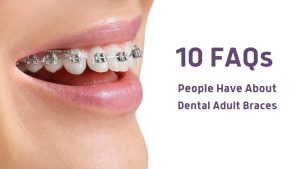Unknown Facts About Legacy Orthodontics
Unknown Facts About Legacy Orthodontics
Blog Article
The Main Principles Of Legacy Orthodontics
Table of Contents9 Easy Facts About Legacy Orthodontics DescribedSee This Report about Legacy OrthodonticsGetting My Legacy Orthodontics To WorkWhat Does Legacy Orthodontics Do?Not known Facts About Legacy Orthodontics
At Advanced Orthodontics, we give patients with a holistic therapy experience. In addition, we provide flexible therapy routines, flexible settlement alternatives and a fun, delightful experience. clear braces. Phone call ( 480) 357-4900 today for more details and schedule a visit.An orthodontist is a dental professional educated to diagnose, avoid, and deal with teeth and jaw abnormalities. Orthodontists work with individuals of all ages, from children to grownups.
Malocclusion, or misaligned teeth, can bring about dental concerns, including dental caries, gum tissue illness, and challenging or agonizing eating. However not everyone is birthed with straight teeth. If you have a bad bite or big rooms in between your teeth, you may intend to seek advice from a dental practitioner focusing on orthodontic care.
All About Legacy Orthodontics
( Picture Credit History: DigitalVision/Getty Images) Orthodontists make use of dealt with and detachable dental devices, like braces, retainers, and bands, to change the setting of teeth in your mouth. Orthodontic treatment is for dental irregularities, including: Misaligned teethBite troubles, like an overbite or an underbiteCrowded teeth or teeth that are also far apartJaw misalignmentThe goal of orthodontic therapy is to improve your bite.
While you might believe of orthodontists as mainly for youngsters or teens who need dental braces, they can correct dental issues at any kind of age. Orthodontists participate in college, oral institution, and orthodontic school.
, but not all dental practitioners are orthodontists. They concentrate on two locations: Exactly how to correctly and safely relocate teeth Exactly how to properly direct development in the teeth, jaw, and faceOnce an orthodontist has actually completed training, they have the option to become board certified.
A Biased View of Legacy Orthodontics
Imbalance, or malocclusion, is the most usual factor people see an orthodontist. It is hereditary and is the outcome of dimension differences between the top and reduced jaw or between the jaw and teeth. Malocclusion brings about tooth overcrowding, an askew jaw, or irregular bite patterns. Malocclusion is typically treated with: Your orthodontist affixes steel, ceramic, or plastic square bonds to your teeth.
If you have just small malocclusion, you might have the ability to utilize clear leesburg orthodontist braces, called aligners, rather than standard braces (https://pxhere.com/en/photographer/4385580). Some people need a headwear to aid relocate teeth right into line with pressure from outside the mouth. After dental braces or aligners, you'll need to put on a retainer. A retainer is a customized tool that keeps your teeth in location.
They can produce additional space in the mouth without having to pull teeth. Orthodontists utilize cables, medical screws, or plates to support your jaw bone.
You may need to see an orthodontist if you have: Crowding or otherwise sufficient area for all of your teethOverbite, when your upper teeth come over your bottom teethUnderbite, when your bottom teeth are too far forwardSpacing or issues with gapsCrossbite, which is when your top teeth fit behind your bottom teeth when your mouth is closedOpen bite or an upright space in between your front bottom and upper teethMisplaced midline, when the center of your bottom and upper teeth do not align Fixing a dental malocclusion can: Make attacking, chewing, and speaking easierImprove the balance of our face and your total appearanceEase pain from temporomandibular joint disordersSeparate your teeth and make them much easier to clean, helping avoid tooth decay or cavities It's commonly a dental practitioner that initially notifications misaligned teeth throughout a routine exam.
Legacy Orthodontics for Dummies

Throughout your first orthodontic consultation, you'll likely have: An oral examPhotos taken of your face and smileDental X-raysPanoramic (360 level) X-rays of your face and headImpressions to develop molds of your teethThese examinations will help your orthodontist recognize how to wage your treatment. braces. An orthodontist is a dental practitioner who's had training to treat your teeth and jaw
An orthodontist is concentrated on your bite, so something like a cracked tooth would certainly be managed by a dentist. Orthodontists are focused on your bite, or the way your teeth fit together, and the straightness of your teeth.
Ever asked yourself exactly how celebs always seem to have perfectly lined up teeth? Orthodontists are dental specialists who focus on fixing abnormalities in the teeth and jaws.
Little Known Facts About Legacy Orthodontics.

While braces are the most generally acknowledged orthodontic treatment, orthodontists have a varied toolkit at their disposal. The specific approach selected depends on the intensity of the instance, the individual's age, and specific preferences. These reliable dental braces use a system of brackets bound to the teeth and connected by cords.
These detachable trays are tailor-made to gradually shift the teeth's placement. In cases of slim jaws, palatal expanders can be used to create room for proper tooth alignment.
Report this page